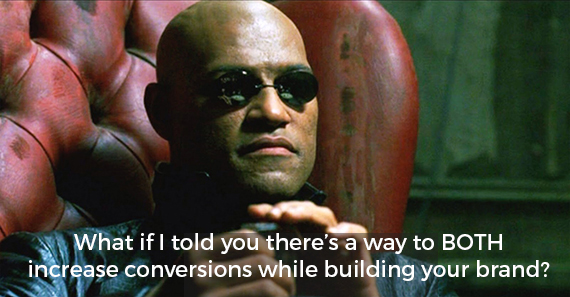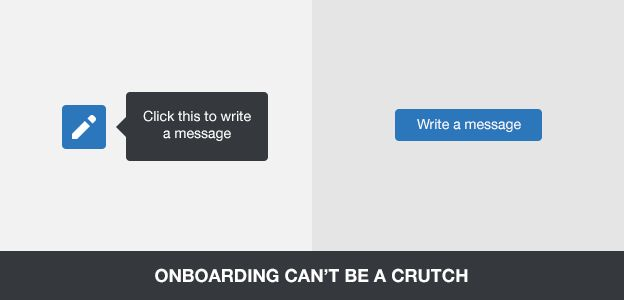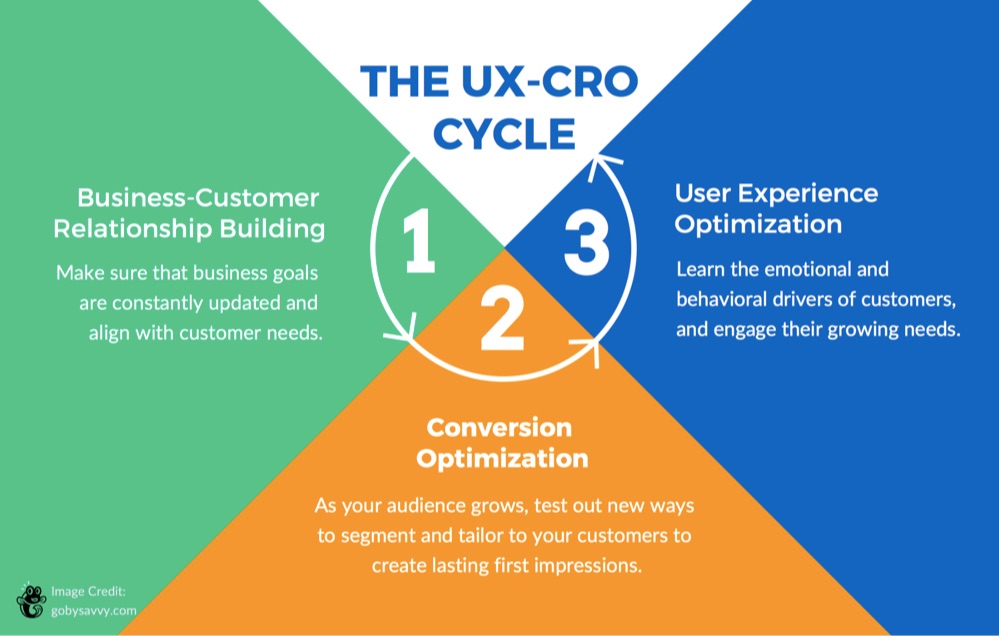Every digital business wants to build a brand that attracts more customers, converts them, and turns people into brand advocates. Unfortunately, not all websites and apps persuade people to become customers, let alone brand advocates.
That’s where the hot trends Conversion Rate Optimization (CRO) and User Experience (UX) Optimization come in. CRO is closely tied to attracting new customers, while UX Optimization is closely tied to creating a more human experience that engages people with a brand.

Both CRO and UXO can and should be done in conjunction. Without one, the other suffers. Great CRO by itself is useful to convert more people, but if the experience suffers then people quickly abandon your product, leave a bad review, and will definitely not recommend you. On the other hand, a great UX by itself might build some loyal brand advocates, but growth will be snail slow until you hit a critical mass of users.
With that being said, it’s time for us to jump in and learn how to harmoniously apply both CRO and UX Optimization together.
The Importance of UX Prep before Conversion Rate Optimization
Let’s talk about the effect of great user experience design on branding. Brands like Uber, Kleenex, and even the infamous Blackbeard are very easy to recognize. Why? They understood the importance of creating a lasting impression. This lasting impression, or brand success, is widespread and as a result, their business potential is nearly unlimited.
The reason why these entities became recognizable brands is because of great products, great service, and people enjoy talking about them. Since people trust their friends and families most, it is word-of-mouth marketing that can be one of the most powerful marketing methods. If you hear it from a friend, you’re more likely to try it. And when you hear it from many friends, you become keenly aware of a brand. In today’s competitive marketplace, it is listening to customers and thoughtful user experience design that pushes companies to the branding level.
Where does brand building start? And how?
Brand building starts day 1, when you start to think about how your product or service will benefit people, and continues for as long as you are in business. This way of thinking is the core of UX.
Customers Pave the Way
So how do we get started with user experience? And what about conversion rate optimization? Well the fact of the matter is that without some basic understanding of how people use your digital product, CRO techniques are taking a stab in the dark, and are likely a waste of time and budget. What’s the point of optimizing a web page or a flow of actions if they are fundamentally broken, confusing and frustrating people? Before focusing on conversion optimization, it’s important to understand what people need so that we can then optimize it. There’s two ways to apply user experience thinking so we can then learn what to optimize. The first way is to have an expert catch “low-hanging fruit” issues, and the second is to gather customer feedback.
Applying What We Already Know
Luckily for us, the psychological science behind user experience is nearly 80 years old (originating during World War II!), which means there is a wealth of knowledge about how people think and act with computers and interfaces. By using this knowledge, a UX expert can fix many of the “low-hanging fruit” problems with a website or application, even before it is launched to the public! When an expert runs through an interface to find issues and suggest quick interface wins, this is called a user experience Review, or UX Review. The findings of the review are built into a report that ranks solutions in terms of severity and priority, so that developers know what is most important.
To get your own UX Review, there are a variety of agencies and freelancers who are a Google search away, or who can be found on freelance websites such as UpWork. For a quality report, it will cost you anywhere between $250 and a few thousand dollars, depending the complexity of your website or app, and how extensive the review is. Generally, the more extensive the review, the more costly it will be.
Applying Research Tailored to a Specific Product
The second way to apply user experience is to actually get customer feedback. And I’m not talking about A/B tests, but actual live tests or discussions with actual customers, called usability testing.
The best part about customer feedback is that it might lead to BIG changes in the right direction. After speaking with 3-5 customers, we might find out that people aren’t clicking that call-to-action because the website has major trust issues, beyond something we can resolve with simple copy or CTA changes. Or we might test 3-5 customers on our application, and find out that people don’t understand the value of the product, because it isn’t what people are used to.
It’s not the people, it’s the product! Make sure to fix all of those low-hanging fruit issues and test with real people before thinking about conversion optimization techniques.
CRO: What You Should Know
Now that we’ve first covered our bases with user experience research, it’s the perfect time for conversion rate optimization! With a better understanding of our customers, and with an interface better designed for people, we can focus on converting more people into happy customers. Conversion optimization is also a big part of branding, because first impressions count.
Let’s talk about some of the basic tools and techniques of CRO, and the effect of CRO on branding. The first tool of any CRO expert’s arsenal is analytics. With analytics, we can gain useful insights about how people first interact with our brand. Are the majority of people leaving quickly? Are they willing to provide their email address and continue the conversation? Are they exploring the website or app store to learn more? Most of us know about negative conversion metrics (bounce rate, low time on page, etc), and thinking of these as a first impression with our brand will allow us to come up with great solutions.
Once you pinpoint drop-off points and areas with low engagement, conversion optimization focuses on A/B testing copy, imagery, call to actions, and the value proposition to determine which combinations lead to the highest conversions. The goal is to create more compelling content, and a seamless flow, to encourage more people to open up a conversation with the company (conversion).
We won’t dive too deep into the actual tools and techniques of CRO, as that is widely covered on the Kissmetrics blog and around the net. Here is a list of common CRO tools, and here is a list of common CRO techniques to use with those tools.
UX Optimization: What You Should Know
With CRO successfully underway, it’s time to revisit UX. User experience Optimization focuses on improving engagement metrics such as active users, frequency of use, number of shares, churn, repeat purchases, perceived ease of use, etc. It’s important to define what engagement metrics are key to growing business in the short-term, and the long-term. User experience experts can then work with customers to research and design digital products that create the emotional and behavioral responses that fit customer needs AND improve the target business metrics.
So what UX techniques are important to improve customer engagement? Similar to CRO, UX Optimization should start with Analytics, taking a look at key pages and action flows to see where engagement metrics are low. Most companies have some form of analytics set up. We can either ask for access to take a look ourselves, or request reports of key metrics for an important time period. Some of the standard analytics tools include: Google Analytics for websites, Google Analytics for mobile apps, and Kissmetrics for SaaS applications.
In the analytics tool, we’ll want to look for acquisition, behavior, and flow data. Acquisition is conversion information about how people arrive at a website or application. Behavior includes engagement information such as bounce rates, time on task, downloads, active users, frequency of use, etc. Flow data maps out the typical flow of pages that people common access, such as home page -> product -> cart -> purchase. Each company has different metrics that they prioritize, along with a goal to reach (such as less than 50% bounce rate). Find out what pages and flows are underperforming, and you’ve found potential problem areas!
With a general idea of problem areas, we can conduct a thorough expert UX Reviews to identify low-hanging fruit, and conduct usability tests to pinpoint usability issues and customer frustrations that are often overlooked in an expert UX Review alone. With basic issues fixed, we can build rapid prototypes to test engagement metrics against current designs, which is somewhat similar to A/B testing during CRO.
To conduct your own UX Review, there are many free UX checklists available that cover common principles, best practices, and recent trends. Some of the most important principles today include:
- Persuasive design
- Color psychology
- Usability.gov’s extensive guidelines
- Nielsen’s usability heuristics
- Fitts’ Law
- Navigation best practices
- User onboarding
- Social proof
- Trust & credibility
- Gradual engagement
- The power of human faces in imagery
- Gamification
- Conversion optimization
- Engagement optimization
An expert review is an important part of the UX optimization process. It can be done quickly and affordably, and catches both major and minor issues that can be fixed quickly.

When it comes to usability testing, there are a wide variety of remote usability testing tools, and laboratory tools (Morae is the most common lab tool) that we can use to measure engagement metrics.
Some tools such as UserTesting and Validately allow you to recruit test participants directly from their pool of testers. However, if the demographics of the testers don’t fit your customers, you can recruit participants with a tool like User Interviews. The beautiful thing about usability testing is that we are able see how people actually use our digital product, as opposed to only analyzing metrics. Sometimes the best design solutions are discovered when watching people in action (NOT focus groups)!
Usability testing also reveals what’s really important to customers, so your CRO experts can offer people better products, services, and promotions (and a custom bonus or gift to customers might be more profitable than a straight discount offer)!

After the UX Review and usability tests pinpoint interface improvements, it’s time to build a rapid prototype to test to see if the improvements increase our key engagement metrics. Tools such as Axure and UXPin make rapid prototyping easy. Once our prototype is set up and ready to go, it’s time to set up another set of usability tests and compare engagement metrics with the prototype to those with the current live version of our digital product. If the design changes offer an improvement, implement them!
Marrying CRO and UXO
CRO and UX Optimization have great synergy together.
As more people convert to customers, it’s important that customers stay engaged with the digital product. Engagement comes in many forms: more active hours using the digital product, downloading and sharing content, visiting/logging in more frequency, referring people (colleagues, friends, and family), completing tasks seamlessly, and more.
The better these “metrics”, the stronger the relationship between the company and the customer, the closer a company comes to building a brand relationship with people. And as more people get to know a company brand, the more diverse the conversion funnels become! A larger company has a larger audience, and must continuously grow to meet wider needs.

Takeaway: Conversions Don’t Always Lead to Engagement, and Vice Versa. Think Big. Think Branding.
CRO and UX Optimization are the twin pillars upon which a company’s branding rests… CRO and UXO experts working together will push a digital product leaps and bounds beyond what either one can do alone. Both are equally important in the early stages of a startup, to help convert more customers and ensure the experience is as intuitive and seamless as possible. As a company grows, both have a strong impact on the company’s branding through first impressions, conversions, engagement, and word of mouth marketing.
So the formal user experience and conversion rate optimization process is:
- Understand customers first via customer feedback.
- Optimize low-hanging fruit with a UX Review before spending budget on optimization.
- Optimize conversions, to attract customers.
- Optimize engagement, to retain customers.
- Rinse and repeat until your company creates a lasting impression on the world.
If a company follows this process from day 1, they will enjoy more conversions, build brand advocates, create an experience that people find useful, build something people remember, and create something that people will share.
With that, I’ll leave you to share this article with your colleagues, friends, and family ;) I hope it was insightful and fun to read!
About the Author: Ryan O’Connor (Ryan’s LinkedIn), the co-founder of GobySavvy, is on a mission to help companies discover the balance between creating delightful digital user experiences while achieving business goals. He created the GobySavvy UX Optimization blog to discuss hot trends in conversion and engagement focused design.
No comments:
Post a Comment